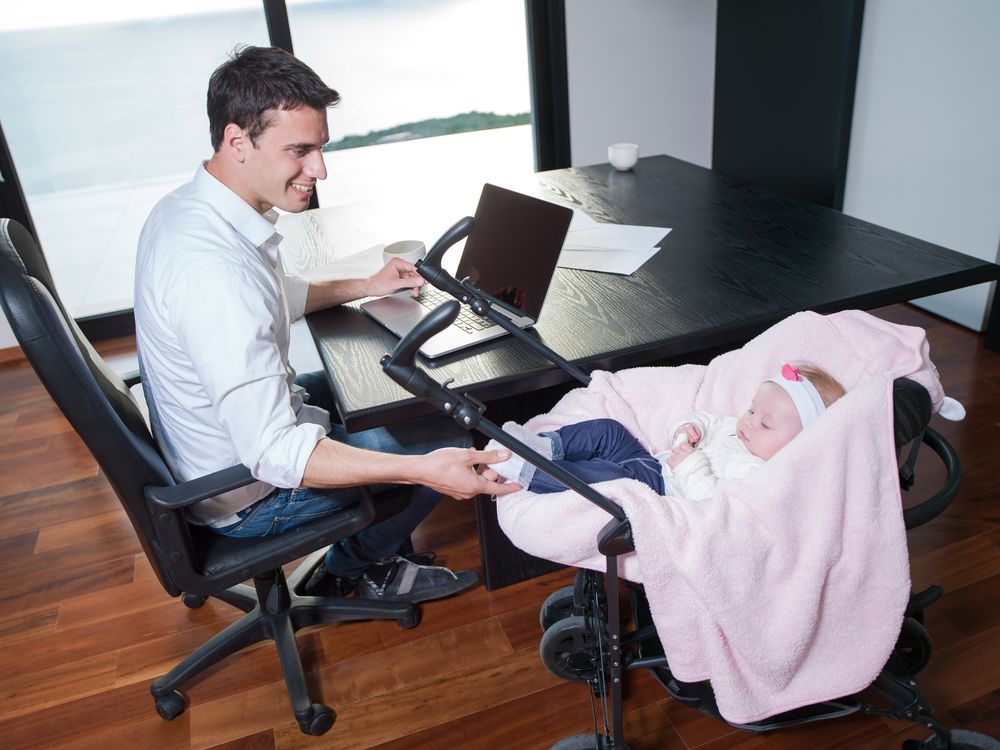So, you’ve been told to work from home for the first time. And you’ve read a few blog posts about how to be productive. Meh, most of that advice might not be right for you. As someone who has worked from home since 2002, I’m here to tell you that you are not likely to be terrifically productive right away.
There is a pandemic going on out there and it’s not “business as usual” for your colleagues or anyone else you interact with. My team was hired with the expectation of remote work, and has carefully selected tools and technology, and fine tuned work flows, and it’s not business as usual for us either.
You might have access to most of your files, but not all of them. You might have most of your normal IT security in place, but maybe not all of it. And your home might be a sub-optimal environment for doing your kind of work (making calls, meeting people, collaborating with colleagues, thinking….).
You might have some idea of what you should be doing for work right now, but we all know that plan will change hourly or at least daily for a long time. We all realize that no organization is “going back to normal.” We’re going to end up somewhere entirely new a year or two from now. You’ll hear advice about the best ways to do remote work. Eh, I’m not so sure. Your mileage may vary. Optimizing your productivity for the world of 2019 is not going to be super helpful.
First things first: Focus on getting access to the information you need, find ways to keep your data and communications secure, and find the simplest, most reliable, least intrusive ways to connect with … everyone and everything.
For example:
Video conferencing: In our company, we have 5 or 6 video conferencing tools. For the most part, we use the phone. It works. It’s simple. And most humans know how to use it. (Who wants to clean their workspace, and take a shower and try to look presentable if it’s just an internal call?)
Standardizing tools: We don’t standardize everything. We have multiple ways to share information, so each of our teams uses what they prefer. One team collaborates using Google Suite (Sheets mostly), other teams use Office 365 and OneNote. I do think your file storage should be secure and standard. We already have a file sharing system (because Sharepoint was not friendly enough for us) and you probably do too (at the office). Hopefully your office system works at home.
Communications: We work hard to share information transparently, but to avoid spamming each other with constant email interruptions. Email is shockingly inefficient when you look at it (really? everyone you copy has to read the email, and then decide whether to respond to it, delete it, or keep it and decide where to file it. And when you share a document via email, now you have multiple copies of it floating in everyone’s inbox. NO THANK YOU). Most of our conversations are either in a channel in MS Teams (for stuff we want to remember) or in a chat (for stuff we don’t need to refer back to). The stuff we keep can be found, and our responses can be a simple “thumbs up.” Our files all exist in one and only one place, with robust security and backups. (And yes, we have naming conventions.) It’s a pain to set up, but once it’s there, nobody wonders where to find the latest copy of the TPS cover page.
Daily structure: Some of my colleagues have a pretty solid structure to their days; others do not. One thing we hold open across all our calendars is “Huddle” time. (It’s kind of like a professor holding specific office hours.) So if we need to get on someone’s calendar, it’s easy to find a time without interrupting them. We really discourage on the fly phone calls or spontaneous meetings…interruptions are the bane of thinking and productivity.
Getting dressed for work: Nobody on our team thinks we should “dress for work” although lots of people who write about remote work think that getting dressed up for work helps put them in the right frame of mind. Some people on our team choose to work in PJ’s and bunny slippers, but ain’t nobody gets dressed nicely enough to do more than walk the dog.
Self care: Lately, I’m really encouraging our people to get more sleep, sun, and exercise. (Whenever possible as they balance new family demands.) We’ve always been very flexible with work schedules but very strict with client deadlines and producing impeccable client deliverables. We’re not going to change our high standards for client interactions, but we’re carefully reducing everyone’s workload right now. We know our team will not be as productive with more family members in the house, and with spending 2-3 hours a day washing our hands.
It takes about a year to really train a family how to deal with remote work happening in the house. I know we’re going to have new background noise and distractions because a home has different expectations than an office.
Check ins with colleagues: As I see it, if you routinely interact with people over the phone, or in a chat, or (heaven forbid) over email, you don’t really need to video chat also. Hey knock yourself out if that’s a preference for you, but don’t feel like you are doing remote work wrong if you don’t.
In summary, ignore all blog posts (including this one), and don’t worry if you are doing remote work “wrong.” Eventually you’ll find your own way to do remote work.
